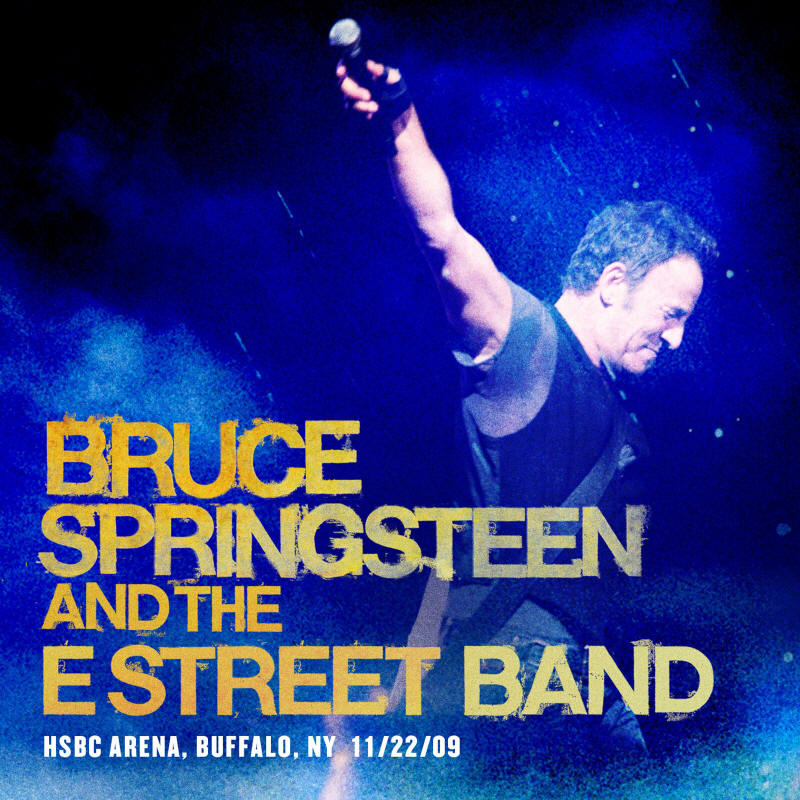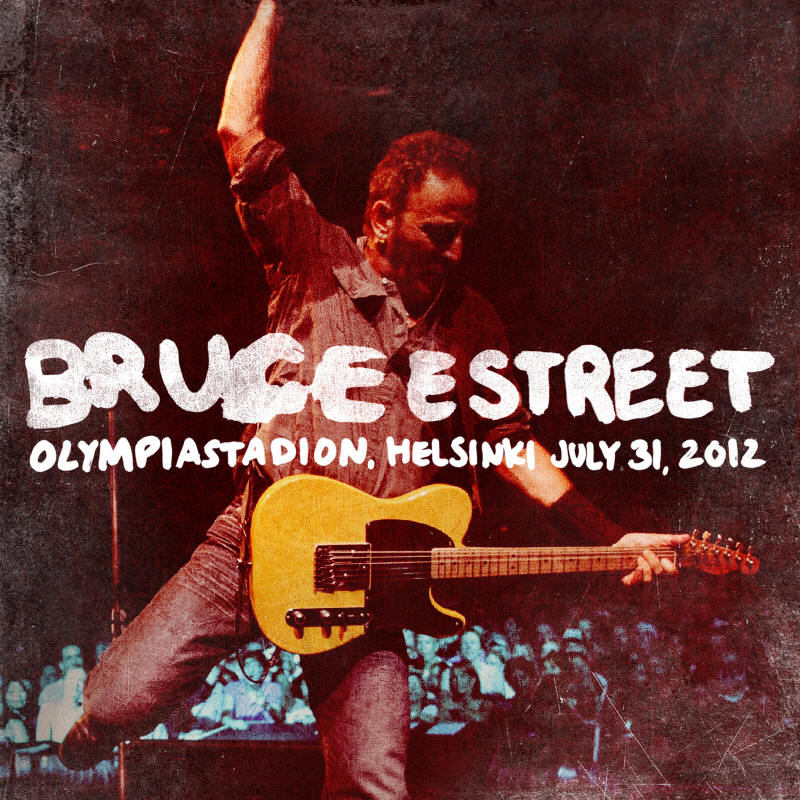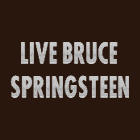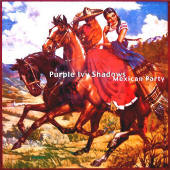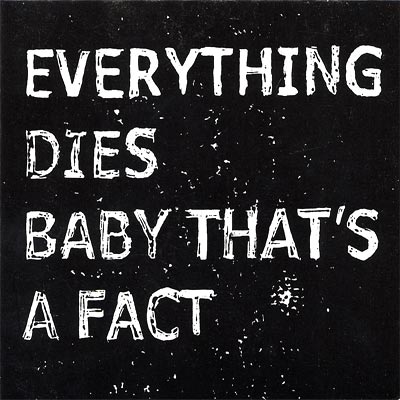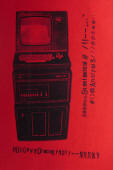DOES THIS BUS STOP AT 82ND STREET? 
Album version
Hey bus driver, keep the change, bless your children, give them names
Don't trust men who walk with canes
Drink this and you'll grow wings on your feet
Broadway Mary, Joan Fontaine, advertiser on a downtown train
Oh, Christmas crier bustin' cane, he's in love again
Where dock worker's dreams mix with panther's schemes to someday own the rodeo
Tainted women in VistaVision perform for out-of-state kids at the late show
Wizard imps and sweat sock pimps, interstellar mongrel nymphs
Oh, Rex said that lady left him limp
Love's like that
Sure it is
Oh, Queen of Diamonds, Ace of Spades, newly discovered lovers of the Everglades
They take out a full page ad in the trades to announce their arrival
And Mary Lou, she found out how to cope, she rides to heaven on a gyroscope
The Daily News asks her for the dope
She says, "Man, the dope's that there's still hope"
Senorita, Spanish rose, wipes her eyes and blows her nose
Uptown in Harlem she throws a rose to some lucky young matador
Info
DOES THIS BUS STOP AT 82ND STREET? is a song written by Bruce Springsteen and released on his 1973 album Greetings From Asbury Park, N.J.. The above lyrics are for Bruce Springsteen's album version of DOES THIS BUS STOP AT 82ND STREET? as released in 1973.
Writing and Recording
There is no indication to when exactly DOES THIS BUS STOP AT 82ND STREET? was written. According to Rob Kirkpatrick's 2009 book Magic in the Night: The Words and Music of Bruce Springsteen, the song was "inspired by an uptown bus trip Springsteen had taken to visit a girlfriend in New York City."
DOES THIS BUS STOP AT 82ND STREET? was recorded during the Greetings From Asbury Park, N.J. album recording sessions at 914 Sound Studios in Blauvelt, NY. The track, as well as the whole album, was produced by Mike Appel and Jimmy Cretecos. According to Sony's logs of Bruce Springsteen's studio sessions, the song was cut on 26 Jun 1972, 27 Jun 1972, and 12 Jul 1972. Bruce Springsteen recorded solo on 26 Jun 1972, but he brought in Vini Lopez, David Sancious, and Garry Tallent the following day. It is not clear in which arrangement the song was recorded on 12 Jul 1972. Springsteen plays guitar and sings vocals on the officially released album version of the song, and is backed by Vini Lopez on drums, David Sancious on piano and keyboards, and Garry Tallent on electric bass. Taking all this into account, the album version of DOES THIS BUS STOP AT 82ND STREET? was probably recorded on 27 Jun 1972, or possibly on 12 Jul 1972 if Springsteen recorded with the band on that day.
A solo demo of DOES THIS BUS STOP AT 82ND STREET? was performed and recorded during Springsteen's first formal studio audition for CBS Records on 03 May 1972. It features Springsteen solo on vocals and acoustic guitar. See the 03 May 1972 demo version and the "1971-1972 Auditions" section below for more details. This demo take was released on the Tracks box set in 1998.
DOES THIS BUS STOP AT 82ND STREET? (written as "Bus Driver") appears on a Springsteen handwritten song list that was put up for auction in December 2013 on GottaHaveRockAndRoll.com. This is most probably a list of songs that Springsteen was considering taking into the studio at the very early stages of the Greetings From Asbury Park, N.J. recording sessions (July 1972).
1972 handwritten song list
First Appearances
On 04 Nov 1971, Carl "Tinker" West, then-manager of The Bruce Springsteen Band, drove Bruce Springsteen to New York City to introduce him to Mike Appel, a songwriter who carried on his songwriting activities jointly with Jim Cretecos. Appel was then employed at Pocketful Of Tunes Inc., Wes Farrell's publishing company in New York City, NY, and the meeting took place at Pocketful Of Tunes. Springsteen performed two or three songs, some on piano and some on acoustic guitar. Only Appel and West were present at this first meeting. Appel has stated in interview that he was not particularly impressed by what he heard at this initial audition but did see raw creativity in the lyrics of BABY DOLL. That performance was not recorded and the titles of the other song(s) performed remain unclear. Appel indicated an interest in promoting them in some way and the meeting ended with an agreement to keep in touch but no commitments from either party.
Meanwhile Springsteen continued gigging with The Bruce Springsteen Band in New Jersey and Virginia and visited his family in California for a few weeks around the holidays. The next meeting between Springsteen and Appel took place on 14 Feb 1972. Springsteen performed a set of seven songs at Appel's office at Pocketful Of Tunes. The songs were performed live solo on acoustic guitar to an audience of three: Mike Appel, Jim Cretecos, and Bob Spitz. Spitz recorded the performance on a reel-to-reel tape recorder. IT'S HARD TO BE A SAINT IN THE CITY was performed a second time at the request of Appel who reportedly was dazzled the lyrics. After that performance Appel and Cretecos began putting the wheels in motion to sign Springsteen to a comprehensive range of contracts.
- NO NEED
- COWBOYS OF THE SEA
- IF I WAS THE PRIEST
- IT'S HARD TO BE A SAINT IN THE CITY [take #1, fast version]
- IT'S HARD TO BE A SAINT IN THE CITY [take #2, slow version]
- THE ANGEL
- HOLLYWOOD KIDS
- ARABIAN NIGHTS
- FOR YOU
In March 1972, it was agreed that Appel and Cretecos would promote Springsteen's interests. For that purpose, Appel and Cretecos formed three partnerships owned equally by the two: Laurel Canyon Management to act as Springsteen's manager, Laurel Canyon Productions to cover his recording activities, and Sioux City Music Inc to cover his songwriting activities. In the meantime, Springsteen entered into an "Exclusive Management Contract" with Laurel Canyon Management and an "Exclusive Recording Contract" with Laurel Canyon Productions, but did not sign any songwriting agreement at this time, apparently wishing to think this matter over a bit longer. The two contracts were signed at Appel's office.
Appel wanted to sign Springsteen to Columbia Records. He could not arrange a meeting with label head Clive Davis but was able to arrange one with CBS A&R Manager and talent scout John Hammond. An informal private audition took place around 10:30 AM on 02 May 1972 in Hammond's office in the A&R Department at Columbia Records in New York City. John Hammond and Mike Appel were the only two present at the audition. All songs were performed on acoustic guitar and the performance, which lasted about 30 to 40 minutes, was not recorded but based on the collective recollections of the attendees at least the following four songs were played:
- GROWIN' UP
- IT'S HARD TO BE A SAINT IN THE CITY
- MARY QUEEN OF ARKANSAS
- IF I WAS THE PRIEST
In a 1980 interview, Hammond mentioned he wasn't all that enamored with MARY QUEEN OF ARKANSAS, but that he loved all the other songs that Springsteen performed that morning. "It was a big, big day for me," Springsteen told Mark Hagen in an interview for Mojo magazine published in January 1999. "I was twenty-two and came up on the bus with an acoustic guitar with no case which I'd borrowed from the drummer from The Castiles. I was embarrassed carrying it around the city. I walked into [John Hammond's] office and had the audition and I played a couple of songs and he said, 'You've got to be on Columbia Records. But I need to see you play. And I need to hear how you sound on tape.'"
Springsteen said that he and Mike Appel "walked all around the Village trying to find some place that would let somebody just get up on stage and play. We went to the Bitter End, it didn't work out. We went to another club. And finally we went to the old Gaslight on MacDougal Street and the guy says, 'Yeah, we have an open night where you can come down and play for half an hour'. There were about 10 people in the place and I played for about half an hour." The performance took place at the Gaslight Au Go Go club in New York City. No recording has emanated from this club appearance which lasted about 30 minutes and included just 4 or 5 songs. Both Springsteen and Appel have mentioned these two tracks as having been played:
- GROWIN' UP
- IT'S HARD TO BE A SAINT IN THE CITY
John Hammond was impressed. "The kid absolutely knocked me out," he told Newsweek in 1975. "I only hear somebody really good once every ten years, and not only was Bruce the best, he was a lot better than Dylan when I first heard him." As Springsteen recalled, Hammond said, "Gee, that was great. I want you to come to the Columbia Recording Studio and make a demo tape". He invited Springsteen back to CBS to make a studio demo audition tape the following day. Springsteen said, "A demo I made at Bill Graham's studio in San Francisco in '69 was the only other time I'd ever been in a real recording studio. Columbia was very old-fashioned: everybody in ties and shirts; the engineer was in a white shirt and a tie and was probably 50, 55 years old, it was just him and John and Mike Appel there, and he just hits the button and gives you your serial number, and off you go. I was excited. I felt I'd written some good songs and this was my shot. I had nothing to lose and it was like the beginning of something."
Springsteen's first "formal" studio audition for CBS took place on 03 May 1972 at CBS Studios in New York City. The session consisted of 12 songs. Click on any of the below links for more details.
Four of the tracks recorded during that demo session would be officially released in 1998 on the Tracks box set. John Hammond's introduction of the audition was kept intact at the start of MARY QUEEN OF ARKANSAS which opens the box set. Hammond was prepared to sign Bruce on the spot but administrative formalities within CBS meant that it would take several weeks for that to become reality. According to Clinton Heylin's 2012 book E Street Shuffle: The Glory Days of Bruce Springsteen & the E Street Band, Hammond send Clive Davis a dub of the audition and a memo saying: "Here is a copy of a couple of the reels of Bruce Springsteen, a very talented kid who recorded these twelve songs in a period of around two hours last Wednesday... I think we better act quickly because many people heard the boy at The Gaslight so that his fame is beginning to spread." Davis responded the next day, "I love Bruce Springsteen! He's an original in every respect. I'd like to meet him if you can arrange it."
Springsteen told Mark Hagen, "I knew a lot about John Hammond, the work he'd done, the people he'd discovered, his importance in music and it was very exciting to feel you were worth his time. No matter what happened afterwards, even it was just for this one night, you were worth his time. That meant a lot to me. He was very encouraging – simply being in that room with him at the board was one of my greatest recording experiences."
According to Heylin, Hammond thought that Springsteen might be better off on the Epic subsidiary, but Mike Appel intercepted: "[Hammond] decided that Bruce should be with the younger people at Epic and not with the stodgier, older people at Columbia – and he got this in his head. I always felt that Columbia was the classiest label on the planet. I just always saw [Bruce's] record going round on that red label, just like Dylan's did."
About a week following the audition, Springsteen entered into an "Exclusive Songwriting Contract" with Sioux City Music Inc and a new/revised "Exclusive Management Contract" with Laurel Canyon Management. The two contracts were signed at the office of New York attorney Jules Kurz, a sole practitioner specializing in music and entertainment law who was then handling Appel and Cretecos' business affairs. This new management agreement replaced the one from March and made changes in remuneration and compensation rates between the parties; it was a better deal for Springsteen than the previous one.
Following the signing of the agreements, Springsteen began a series of demo sessions for Sioux City Music Inc in May and June 1972. The session took place at two locations in New York City: Wes Farrell's Pocketful Of Sounds Studios where Appel was then still employed, and the apartment of Jim Cretecos. There were multiple sessions held at each location and the session dates at the two locations may have actually intertwined. Cretecos' apartment was utilized due to the limited availability of the studio at Pocketful Of Sounds. Cretecos was an electronics engineer and was able to emulate a reasonable recording environment in his apartment, so much so that it is difficult to distinguish some of the recordings Bruce made in Cretecos' apartment from those made in a professional studio.
On 09 Jun 1972 Laurel Canyon Productions (describing itself as Laurel Canyon Productions Inc) entered into a recording agreement with CBS Records. This meant that Springsteen was not signed directly to CBS, but his services were subcontracted to CBS by Laurel Canyon. Under the recording agreement, all individual recordings made by Springsteen under the CBS agreement remained the property of Laurel Canyon Productions until such point that they were assigned and transferred to CBS. This contract was signed by CBS at CBS Records offices and by Mike Appel at Laurel Canyon Productions offices. Bruce Springsteen signed it too, on the hood of a car in a dimly lit bar parking lot in New York City. Appel had him sign it as a matter of courtesy and as a matter of endorsement – from a legal standpoint it was not necessary that Springsteen signs this agreement as the "Exclusive Recording Agreement" between him and Laurel Canyon Productions did not grant him the right to block or refuse this contract between Laurel Canyon Productions and CBS. The contract was varied in August 1972 to also cover the master tapes of certain songs which had been recorded prior to the date of the agreement.
Mike Appel and Jimmy Cretecos later decided to change their business structure and model. They wanted to cease the partnership model and incorporate their businesses with the two having a 50/50 split in shares of the new incorporated business entities. These matters did not involve Springsteen – his signature or permission was not required. Laurel Canyon Productions (the sound recordings partnership) became Laurel Canyon Limited (incorporated) on 28 Jun 1972, Sioux City Music Inc (the songwriting partnership) became Sioux City Music Limited (incorporated) on 05 Oct 1972, and Laurel Canyon Management (the management partnership) became Laurel Canyon Management Limited (incorporated) on 05 Mar 1973. The three new companies were incorporated in New York and Appel and Cretecos were appointed the first directors. Appel and Cretecos wanted to change the name of Sioux City to Laurel Canyon in order to have name consistency among their family of companies, so on 24 Apr 1973 Sioux City Music Limited changed its name to Laurel Canyon Music Limited. In January 1974 Jimmy Cretecos sold his 50% shareholding in each of the Laurel Canyon companies to Mike Appel, thus Appel becoming the sole owner of the companies.
Greetings From Asbury Park, N.J.
After signing the contract with CBS Records, Laurel Canyon Productions was to receive an immediate cash advance from CBS and this money was to be used to pay for the studio time to record Springsteen' debut album. A delay by CBS in delivering the advance money to Laurel Canyon Productions resulted in delaying the sessions till early July 1972. During June Springsteen had finalized the selection of the musicians that would be used for the initial sessions. The musicians chosen, with an ok from Appel and Cretecos, constituted the entire line-up of the former Bruce Springsteen Band: David Sancious on keyboards, Garry Tallent on bass, Vini Lopez on drums, and Steve Van Zandt on quitar. Van Zandt ended up partaking in almost none of the 914 Sound Studios band sessions because of a prior commitment to tour as a member of The Dovells backing group.
The recording sessions for Greetings From Asbury Park, N.J. spanned a period of five months, from early June to late October 1972 (the majority were in June), and they all took place at 914 Sound Studios in Blauvelt, NY. The core "band" sessions were completed in only about two weeks. No unreleased band recordings from the debut album sessions have surfaced. Following these band sessions the various band members scattered. It should be noted that Springsteen had not decided to form a touring band at this stage.
Springsteen spent the next few weeks recording solo material. It was during this period that differences of opinion surfaced about what material was going to dominate the eventually released album. There were two sides in this disagreement: Mike Appel and John Hammond wanted a solo-dominated LP while Jim Cretecos was in favor of a band-dominated one. Springsteen was undecided at first, but soon sided with Cretecos. Appel later said that he was so impressed by Bruce's lyrics and told him, "Who needs a band when you can write lyrics like that?" In early August a compromise was reached and the album track selection was decided upon, featuring five band recordings (DOES THIS BUS STOP AT 82ND STREET?, GROWIN' UP, IT'S HARD TO BE A SAINT IN THE CITY, FOR YOU, and LOST IN THE FLOOD) and five solo recordings (THE ANGEL, MARY QUEEN OF ARKANSAS, JAZZ MUSICIAN, ARABIAN NIGHTS, and VISITATION AT FORT HORN). On 10 Aug 1972 Laurel Canyon transferred the sound recording copyrights to these ten songs to CBS. It seemed the album was finalized, but when then CBS president Clive Davis listened to the tracks he commented that not only did he prefer the band tracks, but he also felt the album lacked a potential hit single. In essence Davis was siding with Springsteen's vision of the album as being more rock-orientated.
In August 1972 Springsteen composed two more commercial-sounding songs, BLINDED BY THE LIGHT and SPIRIT IN THE NIGHT. Consequently a further "band" session was required. However both Sancious and Tallent, then-employed at Alpha Sound Studios in Richmond, NJ, were unable to return to New York to record. Bruce wished to incorporate saxophone in both new songs and contacted Clarence Clemons, a then-member of Norman Seldin & The Joyful Noyze. So the studio session line-up for these two songs was Clemons, Lopez, and Springsteen who played all other instruments, except for the piano on BLINDED BY THE LIGHT which was handled by Harold Wheeler. BLINDED BY THE LIGHT and SPIRIT IN THE NIGHT were completed by early September. These two band recordings bumped three solo recordings: JAZZ MUSICIAN, ARABIAN NIGHTS, and VISITATION AT FORT HORN. Therefore the final album was reduced from 10 tracks to 9, encompassing 7 band tracks and 2 solo tracks. Columbia Records' original intention was to release the album in late November 1972, but decided the album might get overlooked among the massive amount of pre-Christmas releases so the LP was held back for until early January.
Greetings From Asbury Park, N.J. was released on Columbia Records on 05 Jan 1973. It was produced by Mike Appel and Jim Cretecos. The album received mixed but mostly positive reviews and some critics found it under-produced, as Appel and Cretecos tried to spend as little as possible from Columbia's $65,000 advance and recording budget. The album sold 25,000 copies only in its first year of release and did not chart until the summer of 1975 when the hype over the BORN TO RUN single attracted buyers to Springsteen's earlier albums.
Bruce Springsteen -- Greetings From Asbury Park, N.J.
The album features 9 new Springsteen compositions and clocks at 37:08.
Unofficial Release
A very slightly different mix of the album version of DOES THIS BUS STOP AT 82ND STREET? (but same core recording) was released on the briefly-legal album The Early Years (Early Records). See PRODIGAL SON for more details.
Bruce Springsteen -- The Early Years (Early Records)
Other Official Releases
Other versions of DOES THIS BUS STOP AT 82ND STREET? were also officially released.
The
live 31 Dec 1975 version of DOES THIS BUS STOP AT 82ND STREET? was released on the
Tower Theater, Philadelphia 1975 official live download in 2015.
The
live 24 Jun 1993 version of DOES THIS BUS STOP AT 82ND STREET? was released on the
Brendan Byrne Arena, New Jersey June 24, 1993 official live download in 2018.
The
live 08 Dec 1995 version of DOES THIS BUS STOP AT 82ND STREET? was released on the
Dead Man Walkin' European EP in 1996.
The live 24 Nov 1996 version of DOES THIS BUS STOP AT 82ND STREET? was released on the Asbury Park 11/24/96 official live download in 2019.
The live 07 Nov 2009 version of DOES THIS BUS STOP AT 82ND STREET? was released on the MSG 11.07.09 official live download in 2020.
The
live 22 Nov 2009 version of DOES THIS BUS STOP AT 82ND STREET? was released on the
HSBC Arena, Buffalo, NY 11/22/2009 official live download in 2016.
The live 31 Jul 2012 version of DOES THIS BUS STOP AT 82ND STREET? was released on the Olympiastadion, Helsinki July 31, 2012 official live download in 2017.
Live History: on-tour
DOES THIS BUS STOP AT 82ND STREET? is known to have been performed at least once in Bruce Springsteen's early years (pre-October 1972). Very little is known about shows from this early period, and therefore, the song may have been played on some more dates.
DOES THIS BUS STOP AT 82ND STREET? is known to have been performed at least 10 times during what is considered the Greetings From Asbury Park, N.J. Tour (October 1972 to September 1973). Many of that period's setlists are incomplete or unknown, and therefore, the song must have been played on some more dates during the Greetings From Asbury Park, N.J. Tour. On this tour, the song was played in a full-band arrangement with a guitar-and-saxophone-led introduction.
DOES THIS BUS STOP AT 82ND STREET? is known to have been performed at least 33 times during what is considered The Wild, The Innocent, & The E Street Shuffle Tour (September 1973 to March 1975). Some of that period's setlists are incomplete or unknown, and therefore, the song must have been played on some more dates during The Wild, The Innocent, & The E Street Shuffle Tour. Performances toward the beginning of the tour, through the summer of 1974, featured the guitar-and-saxophone-led introduction used on the Greetings From Asbury Park, N.J. Tour (see the live 09 May 1974 (early show) version), while performances from that point forward featured the traditional saxophone introduction (see the live 29 Oct 1974 version).
DOES THIS BUS STOP AT 82ND STREET? is known to have been performed at least 4 times during the Born To Run Tour (73 know dates / 81 known shows, July to December 1975). Some of that period's setlists are incomplete or unknown, and therefore, the song may have been played on some more dates during the Born To Run Tour. On this tour, the song was played in its traditional full-band arrangement. The live 31 Dec 1975 version of DOES THIS BUS STOP AT 82ND STREET? was released on the Tower Theater, Philadelphia 1975 official live download in 2015.
In preparation for World Tour 1992-1993, DOES THIS BUS STOP AT 82ND STREET? was performed during the tour's public warm-up rehearsal show that took place on 23 Mar 1993 at Count Basie Theatre in Red Bank, NJ (see the live 23 Mar 1993 version). The song was played in a new solo acoustic guitar arrangement.
DOES THIS BUS STOP AT 82ND STREET? was performed once during World Tour 1992-1993 (104 dates, June 1992 to June 1993), on 24 Jun 1993 in East Rutherford, NJ. The 24 Jun 1993 show in East Rutherford, NJ, was billed as "Concert To Fight Hunger". The song was played in a new solo acoustic guitar arrangement. The live 24 Jun 1993 version of DOES THIS BUS STOP AT 82ND STREET? was released on the Brendan Byrne Arena, New Jersey June 24, 1993 official live download in 2018.
In preparation for The Ghost Of Tom Joad Solo Acoustic Tour, DOES THIS BUS STOP AT 82ND STREET? was performed during the tour's public warm-up rehearsal show that took place on 21 Nov 1995 at State Theatre in New Brunswick, NJ.
DOES THIS BUS STOP AT 82ND STREET? was performed 46 times during The Ghost Of Tom Joad Solo Acoustic Tour (128 dates, November 1995 to May 1997). It was performed at every single show during the tour's first North American leg and the following European leg's first two weeks, before becoming a rarity for the remainder of the tour. On this tour, the song was played in a solo acoustic guitar arrangement. The live 09 Dec 1995 version of DOES THIS BUS STOP AT 82ND STREET? was released on the Columbia Records Radio Hour Part 1 & 2 radio show in 1995. The live 24 Nov 1996 version of DOES THIS BUS STOP AT 82ND STREET? was released on the Asbury Park 11/24/96 official live download in 2019.
DOES THIS BUS STOP AT 82ND STREET? was performed twice during what is known as The Reunion Tour (132 dates, April 1999 to July 2000). On this tour, the song was played in its traditional full-band arrangement.
DOES THIS BUS STOP AT 82ND STREET? was performed 7 times during The Rising Tour (120 dates, August 2002 to October 2003). The song was played in its full-band traditional arrangement, except on 24 May 2003 in Saint-Denis, France, when it was played solo on acoustic guitar, during a short acoustic set prior to a concert at the venue. See the live 24 May 2003 version for more details.
DOES THIS BUS STOP AT 82ND STREET? was performed 6 times during the Devils & Dust Solo Acoustic Tour (72 dates, April to November 2005). The first four performances were solo acoustic guitar renditions (see the live 18 Jul 2005 version) while the remaining two were solo ukulele (see the live 16 Nov 2005 version).
DOES THIS BUS STOP AT 82ND STREET? was performed once during The Seeger Sessions Tour (56 dates, April to November 2006). On this tour, the song was played in a radically revamped full-band arrangement. See the live 12 Nov 2006 version.
DOES THIS BUS STOP AT 82ND STREET? was performed 3 times during the Magic Tour (100 dates, October 2007 to August 2008), all of them in the United States in 2008. On this tour, the song was played in its traditional full-band arrangement.
DOES THIS BUS STOP AT 82ND STREET? was performed 3 times during the Working On A Dream Tour (83 dates, April to November 2009). The song was played in its traditional full-band arrangement. The live 07 Nov 2009 version of DOES THIS BUS STOP AT 82ND STREET? was released on the MSG 11.07.09 official live download in 2020. The live 22 Nov 2009 version of DOES THIS BUS STOP AT 82ND STREET? was released on the HSBC Arena, Buffalo, NY 11/22/2009 official live download in 2016.
DOES THIS BUS STOP AT 82ND STREET? was performed 18 times during the Wrecking Ball Tour (133 dates, March 2012 to September 2013).
DOES THIS BUS STOP AT 82ND STREET? was performed once during the High Hopes Tour (34 dates, January to May 2014). Audio recordings for most High Hopes Tour shows are officially available for purchase. See the live 26 Feb 2014 version for more details.
Live History: off-tour
DOES THIS BUS STOP AT 82ND STREET? was performed off-tour on 18 Aug 2001 at Asbury Park Waterfront in Asbury Park, NJ, during the 26th annual Clearwater Festival. See the live 18 Aug 2001 version for more details.
DOES THIS BUS STOP AT 82ND STREET? was performed off-tour on 30 Jul 2002 (morning) at Convention Hall in Asbury Park, NJ, prior to Bruce Springsteen & The E Street Band's live broadcast on The Today Show. The song was played in a solo acoustic arrangement. See the live 30 Jul 2002 (morning) version for more details.
DOES THIS BUS STOP AT 82ND STREET? was performed off-tour on 19 Feb 2003 at Somerville Theatre in Somerville, MA, during the DoubleTake Magazine benefit shows. The song was played solo on acoustic guitar and harmonica. See the live 19 Feb 2003 version for more details.
DOES THIS BUS STOP AT 82ND STREET? was performed off-tour on 19 Dec 2004 at Harry's Roadhouse in Asbury Park, NJ, during the first of the two holiday jam shows that took place that day. The song was played in a solo acoustic guitar arrangement. See the live 19 Dec 2004 (early show) version for more details.
DOES THIS BUS STOP AT 82ND STREET? was performed off-tour on 30 Jun 2005 at Keflavik International Airport in Keflavik, Iceland. On his way from Germany back to the US in the midst the Devils & Dust Solo Acoustic Tour, Springsteen's private plane stopped for refueling at Keflavik International Airport in the early hours of 30 Jun 2005. Having never set foot in the country, Springsteen just grabbed his guitar and walked into the small terminal and played a six-song set for the lucky late-shift workers at the airport. According to the Iceland Review, "The employees commented that Springsteen showed no pretense and was very down-to-earth, chatting away with them. His friend asked the airport employees if they would like to listen to a few tunes."
In 1973 and 1974, Bruce Springsteen performed DOES THIS BUS STOP AT 82ND STREET? on four radio performances. On all four occasions, the song was played in a full-band acoustic arrangement. See the individual versions below for more details.
DOES THIS BUS STOP AT 82ND STREET? was performed on one of the four Barack Obama 2008 election rallies on which Springsteen appeared. The song was played solo on acoustic guitar and harmonica. See the live 04 Oct 2008 version for more details.
Bruce Springsteen appeared at a total of six Joe Grushecky & The Houserockers concerts at Soldiers & Sailors Memorial Hall & Museum in Pittsburgh, PA, in 2010, 2011, and 2014. DOES THIS BUS STOP AT 82ND STREET? was performed on 04 Nov 2011. The song was played solo acoustic.
Covers
At least 4 artists have recorded and released Bruce Springsteen's DOES THIS BUS STOP AT 82ND STREET?.
Purple Ivy Shadows -- Mexican Party
CD - Handsome Records (HR00) - USA, 1999
Paul Baribeau & Ginger Alford -- Darkness On The Edge Of Your Town Tour
CD-R - no label (no catalog number) - USA, 2006
CD-R - no label (no catalog number) - USA, 2009
This is a live Bruce Springsteen tribute album. CD-R copies were sold on tour and online. The 2006 issue contains 10 tracks and the 2009 reissue includes 5 additional tracks. DOES THIS BUS STOP AT 82ND STREET? can be found on both issues.
Statistical Analysis -- Discography
MC - DIY United Records (diyu-001) - USA, 2009
Dirk Darmstaedter -- Jukebox Hootenanny
CD - no label (no catalog number) - Germany, 2011
Credits / References
Thanks Jake (ol'catfishinthelake at BTX and Greasy Lake) for the lyrics help.
Some of the above info about the studio recording and the live performances is taken from Brucebase. Info and scans for some of the above Bruce Springsteen cover releases are taken from the Nebraska website.
Request
If you have any additions, comments, or corrections to this page, please contact me via the below form or by email: .
Available Versions
List of available versions of DOES THIS BUS STOP AT 82ND STREET? on this website:
DOES THIS BUS STOP AT 82ND STREET? [Album version]
DOES THIS BUS STOP AT 82ND STREET? [03 May 1972 demo version]
DOES THIS BUS STOP AT 82ND STREET? [Live 09 Jan 1973 version]
DOES THIS BUS STOP AT 82ND STREET? [Live 31 Jan 1973 (early show) version]
DOES THIS BUS STOP AT 82ND STREET? [Live 02 Mar 1973 version]
DOES THIS BUS STOP AT 82ND STREET? [Live 24 Apr 1973 (early show) version]
DOES THIS BUS STOP AT 82ND STREET? [Live 31 May 1973 (WGOE-FM) version]
DOES THIS BUS STOP AT 82ND STREET? [Live 09 Mar 1974 (KLOL-FM) version]
DOES THIS BUS STOP AT 82ND STREET? [Live 09 Apr 1974 version]
DOES THIS BUS STOP AT 82ND STREET? [Live 09 May 1974 (early show) version]
DOES THIS BUS STOP AT 82ND STREET? [Live 29 Oct 1974 version]
DOES THIS BUS STOP AT 82ND STREET? [Live 31 Dec 1975 version]
DOES THIS BUS STOP AT 82ND STREET? [Live 23 Mar 1993 version]
DOES THIS BUS STOP AT 82ND STREET? [Live 24 Jun 1993 version]
DOES THIS BUS STOP AT 82ND STREET? [Live 08 Dec 1995 version]
DOES THIS BUS STOP AT 82ND STREET? [Live 26 Sep 1996 version]
DOES THIS BUS STOP AT 82ND STREET? [Live 24 Sep 1999 version]
DOES THIS BUS STOP AT 82ND STREET? [Live 18 Aug 2001 version]
DOES THIS BUS STOP AT 82ND STREET? [Live 30 Jul 2002 (morning) version]
DOES THIS BUS STOP AT 82ND STREET? [Live 19 Feb 2003 version]
DOES THIS BUS STOP AT 82ND STREET? [Live 07 Mar 2003 version]
DOES THIS BUS STOP AT 82ND STREET? [Live 24 May 2003 version]
DOES THIS BUS STOP AT 82ND STREET? [Live 19 Dec 2004 (early show) version]
DOES THIS BUS STOP AT 82ND STREET? [Live 18 Jul 2005 version]
DOES THIS BUS STOP AT 82ND STREET? [Live 16 Nov 2005 version]
DOES THIS BUS STOP AT 82ND STREET? [Live 12 Nov 2006 version]
DOES THIS BUS STOP AT 82ND STREET? [Live 23 Apr 2008 version]
DOES THIS BUS STOP AT 82ND STREET? [Live 04 Oct 2008 version]
DOES THIS BUS STOP AT 82ND STREET? [Live 22 Nov 2009 version]
DOES THIS BUS STOP AT 82ND STREET? [Live 26 Feb 2014 version]
Page last updated: 16 Apr 2016










